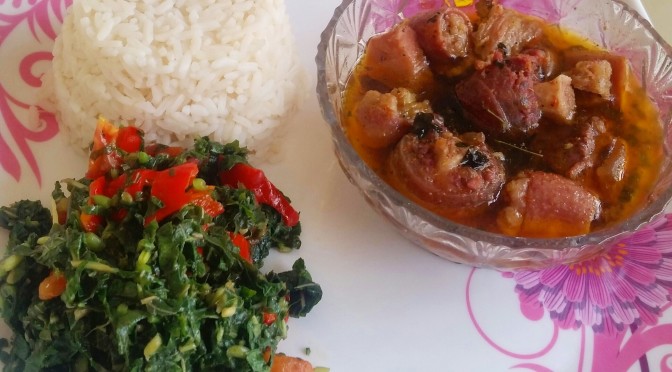
- Keep portions smaller than your fist. It’s easy to overeat when you have too much food on your plate. Smaller portions help prevent overeating. Overeating can make health problems worse, especially if you have diabetes. One way to control overeating is to reduce portion sizes when you eat. For most foods, a reasonable portion is ½ to 1 cup – about the size of a woman’s fist. Even if your fist is larger than that, it is still a handy measuring tool that goes everywhere you go. Just keep your portions smaller than your fist. Not all foods fit the “fist” rule.
The two most common exceptions are:
- Lean meat, chicken and fish. For these foods, keep portions the size of a deck of cards (about half the size of your fist) and trim all visible fats before cooking.
- Plain vegetables, including salads without dressing. You can have as much as you want because these foods are nutritious, filling and low in calories.
- Control your hunger with filling foods that are low in calories. Foods such as lower-sodium soup, salad, fruits and vegetables can help fill you up without adding a lot of calories. These foods will satisfy hunger and help you lose weight. Research shows that people feel less hungry when they eat a certain volume (amount) of food. High-fiber foods, such as fruits and vegetables, can provide a feeling of fullness and also digest slowly. That helps you feel satisfied longer so you eat less.
- Keep track of what you eat. When you keep track of what you eat, you’re more likely to meet your food goals. Studies show that keeping a food log or diary helps people lose weight and keep it off.
- Make trade-offs to reduce how much sodium, saturate and trans fat and sugar you eat. Foods high in fat and sugar are often high in calories, too. But that doesn’t mean you have to give up your favorite foods. Learn to make trade-offs instead. If you want to indulge in your favorite dessert, enjoy a smaller portion and eat a lower-calorie meal.
- Enjoy more physical activity. As you already know, regular physical activity is important for keeping your heart healthy. Increasing physical activity may help you lose weight and strengthen your heart at the same time.
If you feel you need extra support to lose weight, look for a weight-loss program that’s been proven safe and successful.
Look for a program that:
- Stresses a healthy eating plan (low in saturated fat, trans fat, added sugar and sodium, with plenty of fruits, vegetables, whole grains, lean poultry, meat and fish, and fat-free or low-fat dairy).
- Includes daily physical activity.
- Gives you personal support from a group, buddy or dietitian.
- Does not deprive you of the foods you enjoy.
- Has a system to help you keep track of what you eat and drink.
- Recommends a gradual weight loss of 1 to 2 pounds per week until a healthy weight is reached.
- Includes a maintenance program for keeping off weight.

